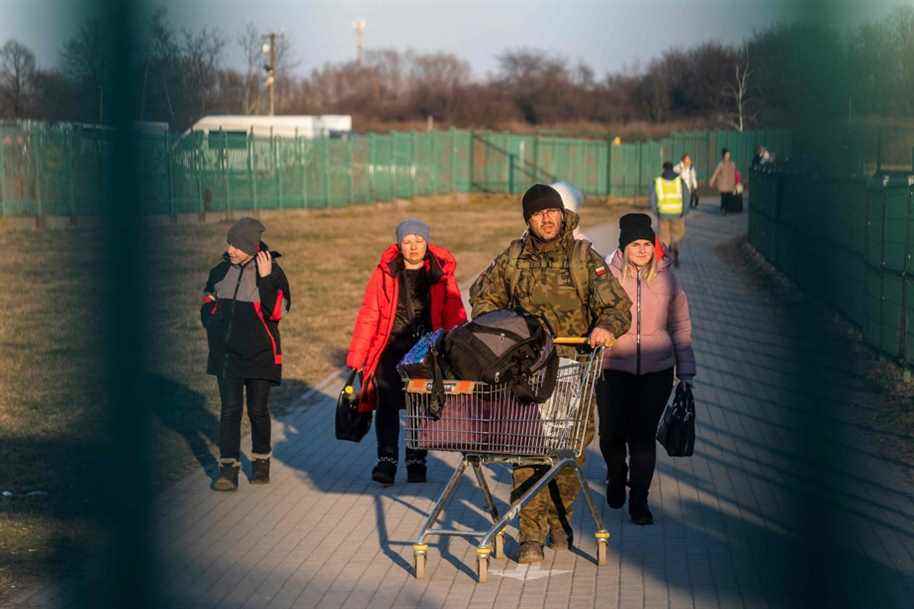Posted at 5:00 a.m.
The Canadian government intends to participate more directly in sending material resources on the ground to Ukraine and neighboring countries to help the victims and refugees of the Russian invasion.
This was stated by the Minister for International Development, Harjit J. Sajjan, in an interview with The Press Monday morning.
“We are looking, within my department, for options to quickly move the assets collected by organizations in Canada,” said the Minister. Canadians are generous and we want donations to reach their destination. »

PHOTO ADRIAN WYLD, THE CANADIAN PRESS ARCHIVES
Harjit Sajjan, Minister of International Development
To date, Canada has announced $145 million in humanitarian aid to Ukraine, including $30 million given to the Red Cross in return for donations collected from the population. Essentially, this aid takes the form of “financial support for established humanitarian organizations operating within the framework of a coordinated international system”, we were told by email on 18 March.
If Minister Sajjan says he is determined to send equipment quickly to Eastern Europe, he does not want to rush anything.
“The issue isn’t so much delivery as making sure we don’t bog down the organized supply chain on the ground,” he says. We don’t just want to unload boxes on airport tarmacs. We want to create a workflow [Pull system] on demand and as needed. This helps move the right goods to the right places. »
It is also seeking to charter air transport for medical aid without going through the Canadian Armed Forces fleet. “They’re busy enough as it is!” We are looking for other planes, whether within the government or elsewhere. »
This initiative will undoubtedly be welcome when we know that the donations collected are slow to be sent. Monday, The Press reported that some 40 tons of goods collected by Ukrainian churches in Montreal were piled up in a warehouse waiting to find funds – between $70,000 and $100,000 – to send them to Europe.
Mr. Sajjan traveled to Moldova, Romania and Poland from March 7 to 11 to see what is happening on the ground. Representatives from Global Affairs Canada are always there to gauge the needs.
“You have to trust”
Since the start of the conflict, Canada, like many other countries, has provided humanitarian assistance to Ukraine. The public is also invited to contribute, through the Canadian Red Cross and other organizations such as the Ukrainian Canadian Congress. Does financial aid surrender?
“You have to trust the professionals,” answers François Audet, director general of the Canadian Observatory on Humanitarian Crises and Action, an organization associated with the School of Management Sciences of the University of Quebec in Montreal.
Financial aid from the Canadian government, which comes from our taxes, goes through various channels: the United Nations, major humanitarian organizations, the Red Cross and partner governments such as Poland, which receives refugees.
François Audet, CEO of the Canadian Observatory on Humanitarian Crises and Action
As for private donations, you have to be discerning, adds the latter. There are many organizations that collect donations and the risk of scams is real. Professional organizations are governed by rules of transparency and good governance on the use of funds raised, says Mr. Audet. It’s up to everyone to see who they give their money to.
“Pre-positioned” warehouses
Minister Sajjan told The Press that part of the material donations “could come from our own warehouses of humanitarian material”. By this, he speaks of “prepositioned” warehouses, gigantic reserves where tents, medicines, dry food, blankets and others are kept to be distributed in the event of a disaster.
This group of Canadian warehouses, a central depot in the Ottawa region and a few others located across the country, is called the National Emergency Strategic Reserve. Its creation dates back to 1952.

PHOTO FROM UN SITE
The UN’s “pre-positioned” warehouse in Dubai
The UN, through the World Food Programme, also operates six warehouses (hubs) installed in Italy, Ghana, Malaysia, Panama, Spain and Dubai.
There are several others.
Negotiate humanitarian access
The humanitarian aid sent to Ukraine and to the refugees is becoming more complex as a result of the war. To deliver it, you have to negotiate humanitarian access, says François Audet. These corridors work in two directions: essential goods enter the country and refugees leave.
According to Mr. Audet, these corridors are negotiated by the International Red Cross. “The organization represents international humanitarian law,” he recalls. It reminds belligerents of their commitments. She is the one who negotiates the corridors and who will inform the entire chain of command on both sides where the population is going to go, where they are going, and so on. »
For many observers on the ground, compliance with these agreements seems very difficult to obtain, particularly from Russia, which is nevertheless a signatory to the Geneva Convention.
Learn more
-
- 82.6 million
- In the current conflict, the role of the Canadian Red Cross is to raise funds which are directed to the International Committee of the Red Cross (ICRC), which redistributes them, as needed, in the field. As of Thursday, March 17, the Canadian Red Cross has raised $82.6 million across the country. Added to this is $30 million in matching funds from the federal government.
source: Canadian Red Cross

